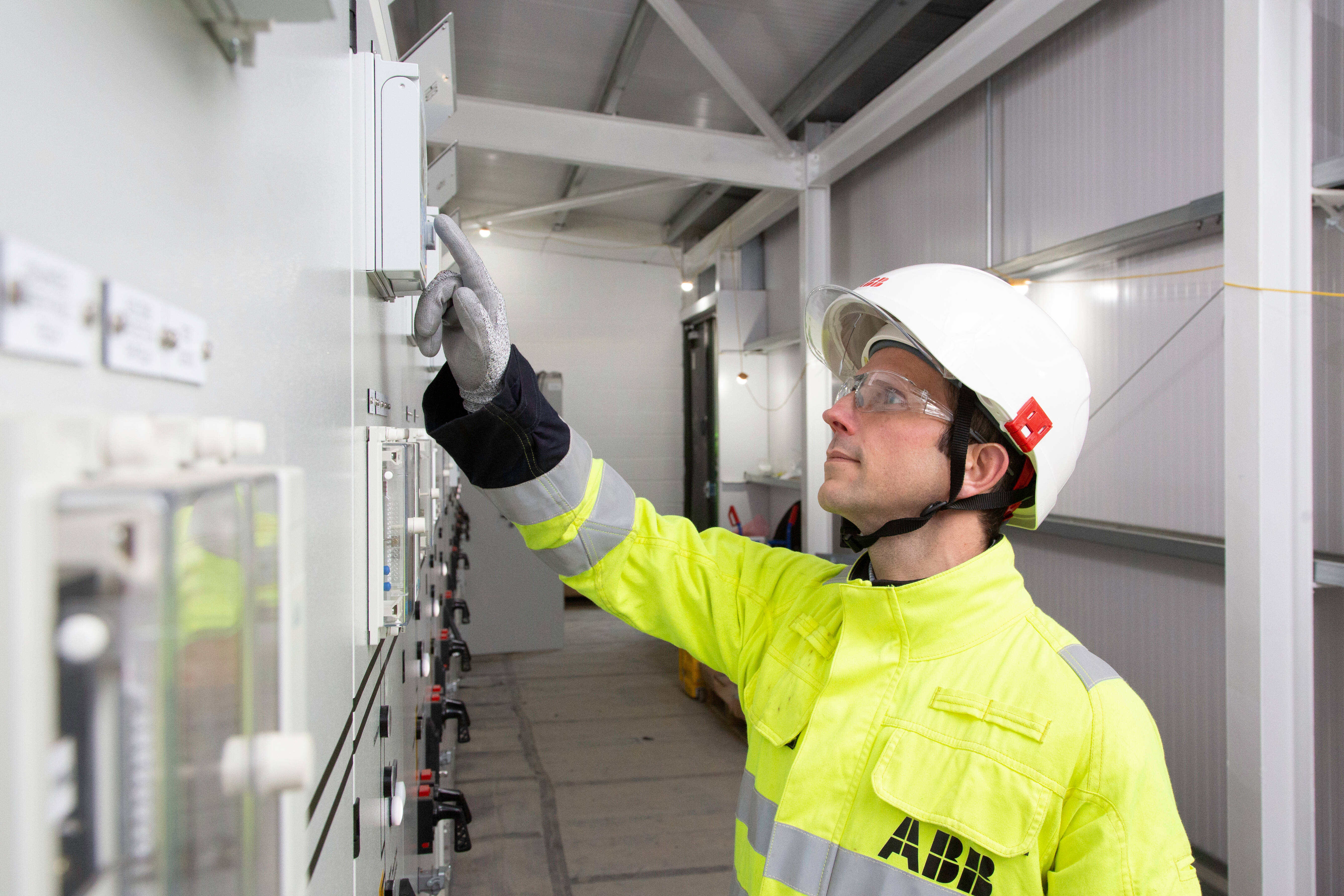You’ve reached your limit!
To continue enjoying Utility Week Innovate, brought to you in association with Utility Week Live or gain unlimited Utility Week site access choose the option that applies to you below:
Register to access Utility Week Innovate
- Get the latest insight on frontline business challenges
- Receive specialist sector newsletters to keep you informed
- Access our Utility Week Innovate content for free
- Join us in bringing collaborative innovation to life at Utility Week Live

According to the European Union, sulphur hexafluoride (SF6) free technologies are the energy industry’s future. Here, ABB’s Stephen Gibbs, discusses their rollout and potential contribution to decarbonised distribution networks.
As a highly efficient electrical insulator, SF6 has been a vital component of switchgear design since the 1950s. It is stable, non-flammable, non-toxic, inert, and exceptional at arc quenching.
However, SF6 is also a very harmful greenhouse gas, with a global warming potential 24,000 times greater than carbon dioxide.
Leakages of SF6 may occur during the manufacturing, shipping, storage, decommissioning, disposal, or recycling of gas-insulated switchgear. When the gas escapes, it lingers in the atmosphere for around 3,200 years.
Consequently, the potential climate impact of SF6 has prompted the industry to develop environmentally friendly alternatives.
The EU’s current regulation requires an overall reduction in emission of fluorinated gases, or F-gases – including SF6 – by two-thirds by 2030 versus 2014 levels. Fortunately, advances in science and engineering now offer competitive SF6-free alternatives.
 Dry air – air with zero moisture content – is one effective alternative to SF6 as an insulating medium. It is particularly effective in networks rated at up to 12 kV. Above this, higher dielectric strength is required. This can be achieved by increasing pressure. Dry air, for example, needs to operate at a pressure of several bars to perform as insulating medium for 36 kV switchgear.
Dry air – air with zero moisture content – is one effective alternative to SF6 as an insulating medium. It is particularly effective in networks rated at up to 12 kV. Above this, higher dielectric strength is required. This can be achieved by increasing pressure. Dry air, for example, needs to operate at a pressure of several bars to perform as insulating medium for 36 kV switchgear.
This requires mechanical design changes to the switchgear such as developing tanks with thicker walls and potentially cylindrical geometry like that used on high voltage switchgear. This drives costs upwards and creates operational challenges with any loss of pressure immediately impacting performance and requiring a DNO to take said unit out of service immediately. Additionally, operators would likely want to deploy pressure sensors to monitor its fleet for pressure loss – and this would require significant investment.
It’s possible to avoid these limitations by implementing low-pressure design that uses an eco-efficient gas instead of dry air or SF6 for switchgear rated higher than 12 kV.
For example, a gas mix based on a small percentage – less than 20% – of fluoroketone molecules added to dry air. This has almost the same insulating performance as SF6 but with a 99.9% lower global warming potential. As a result, switchgear filled with this gas mix operates only slightly above atmospheric pressure. Therefore, careful choice of insulating gas inside switchgear can design out the cost and risk of using high-pressure systems. Furthermore, the fluoroketone molecules only linger for up to 16 days before breaking down, making them much more eco-friendly than SF6.
Switching to become easier
Fortunately, most operating procedures involving SF6-free alternatives don’t differ much from those using the gas. The switchgear for both relies on gas in a sealed container. Access to the tank in both instances demands a trained technician or contractor to handle the gas. The same applies to the switchgear’s end of life when the gas must be removed for the materials to be recycled.
However, operators using SF6-free gases are exempt from regulatory reporting on their gas inventory. SF6-free gases remain safe during operation and at the end of the switchgear’s lifetime.
 Yet the biggest challenge in switching, in most cases, is that operators cannot simply replace the gas in switchgear designed for SF6 with an eco-friendly alternative as the new type of gas may react with some materials in existing switchgear tanks. However, some modern switchgear designs have been developed to be compatible with both SF6 and the fluoroketone mix, so switching will gradually become easier. These dual-compatible gas insulated switchgear designs are on the market today already.
Yet the biggest challenge in switching, in most cases, is that operators cannot simply replace the gas in switchgear designed for SF6 with an eco-friendly alternative as the new type of gas may react with some materials in existing switchgear tanks. However, some modern switchgear designs have been developed to be compatible with both SF6 and the fluoroketone mix, so switching will gradually become easier. These dual-compatible gas insulated switchgear designs are on the market today already.
Cutting SF6 leakage
The acceptance of eco-efficient switchgear has been promising as global utilities strive to cut emissions related to SF6 leakages.
A good example is Northern Powergrid. The utility adopted two switchgear variants at substations in County Durham, both of which use alternatives to SF6 gas to reduce environmental impact. For versions rated up to 24kV, switchgear contains gas with a global warming potential of less than one and the same interface and footprint as regular SF6 switchgear.
According to a senior executive of Northern Powergrid, the utility has already reduced SF6 leaks by 23%, and the pilot project will play an important role as the utility aims to reduce this by a further 15% by 2028.
Similarly, UK Power Networks is committed to cutting its carbon footprint by 2% each year and limiting SF6 leakages to less than 0.2%. To meet these goals, it planned to replace its Dartford facility’s switchgear with designs using SF6-free alternatives.
The firm opted for a 36 kV solution which increases the facility’s capacity while eliminating the use of SF6. The switchgear’s double busbar design increases the facility’s flexibility since one busbar can remain in service while the other is offline.
Application at scale
Ultimately, achieving net zero targets requires bold steps to completely transform our energy infrastructure – all the way down to technical details like switchgear insulating gas, which may seem like a small detail, but which can have a major impact on availability and operational expenditure.
This fluoroketone gas mix is a technology with potential to help electrical distribution networks combat climate change and phase out the use of SF6 gas. Modern gas mixes, such as those developed by ABB and 3M, were developed commercially, but are now available under open patent. As a result, other switchgear manufacturers now have the opportunity to develop their own new-generation SF6-free switchgear.
The first steps taken to remove SF6 from the grid, such as those by UK Power Networks and Northern Powergrid, are important. But only once we’ve seen these new technologies applied at scale, in the real world, will operators actually gain the necessary understanding and familiarity for them to adjust their strategies long-term.
Please login or Register to leave a comment.